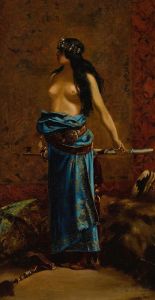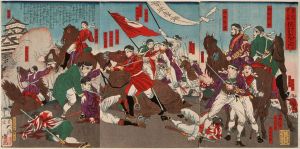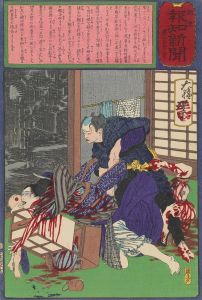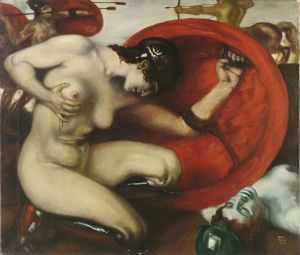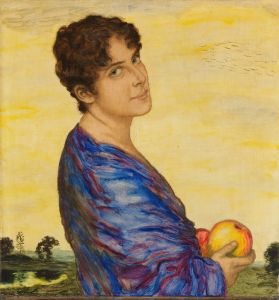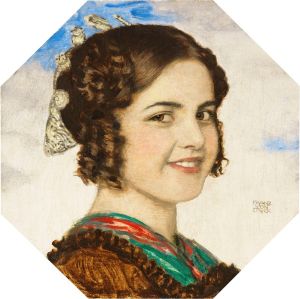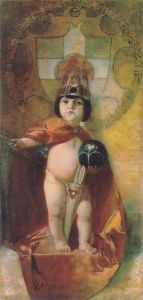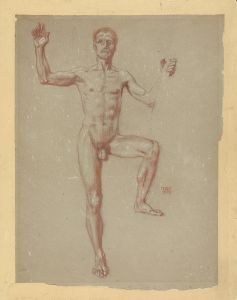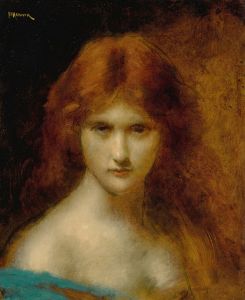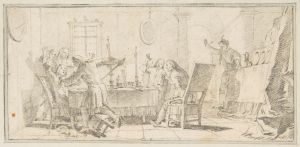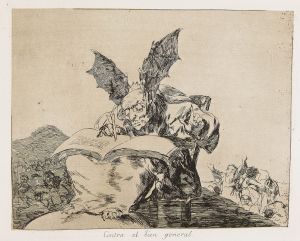
Judith und Holofernes
A hand-painted replica of Franz von Stuck’s masterpiece Judith und Holofernes, meticulously crafted by professional artists to capture the true essence of the original. Each piece is created with museum-quality canvas and rare mineral pigments, carefully painted by experienced artists with delicate brushstrokes and rich, layered colors to perfectly recreate the texture of the original artwork. Unlike machine-printed reproductions, this hand-painted version brings the painting to life, infused with the artist’s emotions and skill in every stroke. Whether for personal collection or home decoration, it instantly elevates the artistic atmosphere of any space.
Franz von Stuck's Judith und Holofernes is a painting created by the German Symbolist artist Franz von Stuck, who was an influential figure in the late 19th and early 20th centuries. Known for his evocative and often mythological or biblical themes, von Stuck's work frequently explored the interplay between beauty, power, and morality.
The painting depicts the biblical story of Judith and Holofernes, a narrative from the deuterocanonical Book of Judith. In this story, Judith, a Jewish widow, saves her people by seducing and then beheading the Assyrian general Holofernes, who was threatening her city. This tale has been a popular subject in art history, symbolizing themes of courage, seduction, and divine justice.
Von Stuck's interpretation of the story is characteristic of his Symbolist style, emphasizing mood, emotion, and the psychological dimensions of the scene. The painting portrays Judith as a powerful and enigmatic figure, often interpreted as embodying both sensuality and danger. Holofernes, on the other hand, is typically shown in a state of vulnerability, emphasizing the reversal of traditional power dynamics.
The composition of Judith und Holofernes reflects von Stuck's mastery of dramatic lighting and his ability to create a sense of tension and foreboding. The use of dark, rich tones and stark contrasts draws the viewer's attention to the central figures, heightening the emotional impact of the scene. The painting also demonstrates von Stuck's interest in the human form, with careful attention to anatomy and expression.
Franz von Stuck was a founding member of the Munich Secession, an art movement that sought to break away from academic traditions and embrace modernist ideas. His work, including Judith und Holofernes, reflects the broader cultural and artistic shifts of the period, blending traditional themes with innovative techniques and perspectives.
While the exact date of creation for Judith und Holofernes is not always specified in sources, it is consistent with von Stuck's broader body of work, which often revisited biblical and mythological themes. The painting is an example of how von Stuck reinterpreted classical stories through the lens of Symbolism, focusing on their psychological and emotional resonance.
Today, Judith und Holofernes is recognized as a significant work within von Stuck's oeuvre, showcasing his ability to merge narrative content with a distinct and evocative visual style. The painting continues to be studied and appreciated for its artistic and cultural significance.






